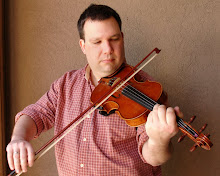2.16.2012
Basic Care of Your Violin
- Keep the instrument in the case when not using it and latch it. One of the more horrifying events for a violinist is to pick up a case by the handle and see the violin fall to the floor when the lid flies open! If the case is not nearby, the instrument may be placed on a towel or case blanket on a flat surface for short durations. Never set the instrument on its side (except cellos and basses). It may easily fall over or damage the delicate edge. Do not leave the violin in the seat of your chair or hang it from your music stand.
- Hold the instrument by the neck or if using two hands, horizontally by the neck heel and the bottom end by the end-button. Hold the instrument in front of your body, especially when passing through doorways. Avoid touching the varnish as the oils and sweat from your hands are harmful to the varnish or may contribute to the opening of a glued joint.
- The best way to keep the instrument clean is by gently wiping with a soft cloth after every use. Accumulated rosin dust will eventually damage the varnish, especially when combined with sweat and air-borne moisture. Sweat also eats at varnish and dislodges glue joints. Cleaning solutions and polishes are best avoided, even those formulated especially for violins. Many even have alcohol or other varnish solvent as a main ingredient. Never use any commercial household cleaners on the instrument.
- Clean the rosin off the strings with a separate soft cloth to avoid spreading rosin dust on the varnish. Some people use alcohol to clean the strings, but it exposes the varnish to unnecessary risk from drops of alcohol. A cloth is good enough.
- Never remove all the strings at once. The sound post inside the violin may fall over when the string tension is released. If it does fall, there is no need to panic, however, you should take the instrument to a violin shop for a violin professional to re-set the sound post. This is an inexpensive procedure, so it really is not worth the damage that could be caused by attempting it on your own.
- NEVER leave the instrument in a car or trunk of an automobile. Violin glue dissolves at 140 degrees Fahrenheit (60 Celsius) and the varnish will easily begin to bubble at even lower temperatures within as little as 30 minutes depending on the weather.
- Store the instrument in a climate controlled area if possible, ideally between 60-75 degrees Farenheit (18-23 Celsius) and 45-65% humidity. Ideal humidity levels are 50-55%. This will prevent the fragile top from cracking due to expansion and contraction of the wood. Wood expands and contracts with changes in temperature and humidity. A good rule of thumb is that if you are comfortable, so is your instrument. Do not store the instrument case near an HVAC vent or radiator. A case humidifier is especially important for musicians that travel. Most cracks occur due to sudden changes in humidity or temperature. The average relative humidity may vary widely from city to city, creating a sudden change in the instrument's environment. Purchase an after-market humidifier and hygrometer (humidity monitor) for your case. Almost all hygrometers supplied with even expensive cases are highly inaccurate and do nothing but look important.
- Do not attempt any repairs by yourself. Home repairs only make the problem more difficult and expensive to repair by a professional.
- If the instrument becomes damaged, avoid fussing with it. Carefully place it the case and take it to a reputable violin shop as soon as possible. A clean crack is easiest to repair. Repairs are best performed by a professional who specializes in repairing bowed string instruments. Guitars and violins are very different animals. I often get calls for damaged guitars and I gladly refer them to my brilliant guitar builder friend.
- If the bridge suddenly collapses, don't panic. Loosen the strings slightly and place a cloth or piece of foam under the tailpiece to prevent damage to the varnish. Keeping it horizontal, place it in the case and take it to your violin shop. Your violin pro can show you how to replace the bridge if it happens again in the future.
1.03.2012
NPR: Can You Pick The Strad?
National Public Radio ran a great story on January 2 about a recent study on the conventional wisdom regarding old and historical violins. The results were fascinating. Old violins are treasured as great art of historical value, as they should, but otherwise they are just that: historical artifacts. Their value derives from their historical importance and rarity, not because the sound that can be produced when using them is unmatched in quality by newer instruments. Some sound great, many don't and all are different. The same goes for new violins, too.
Remember, Stradivari's violins were new once, too.
You can listen to it here.
Remember, Stradivari's violins were new once, too.
You can listen to it here.
Recommended Books on Violin Making
 |
I compiled a selection of books that are available on Amazon.com that are terrific, reasonably priced resources for anyone wishing to know more about violins. They represent both the latest and seminal works on violin making. There are also many large format volumes that include full size photographs and drawings that are available elsewhere. Two sources for these books are Amati Books and Howard Core. |
Subscribe to:
Comments (Atom)






